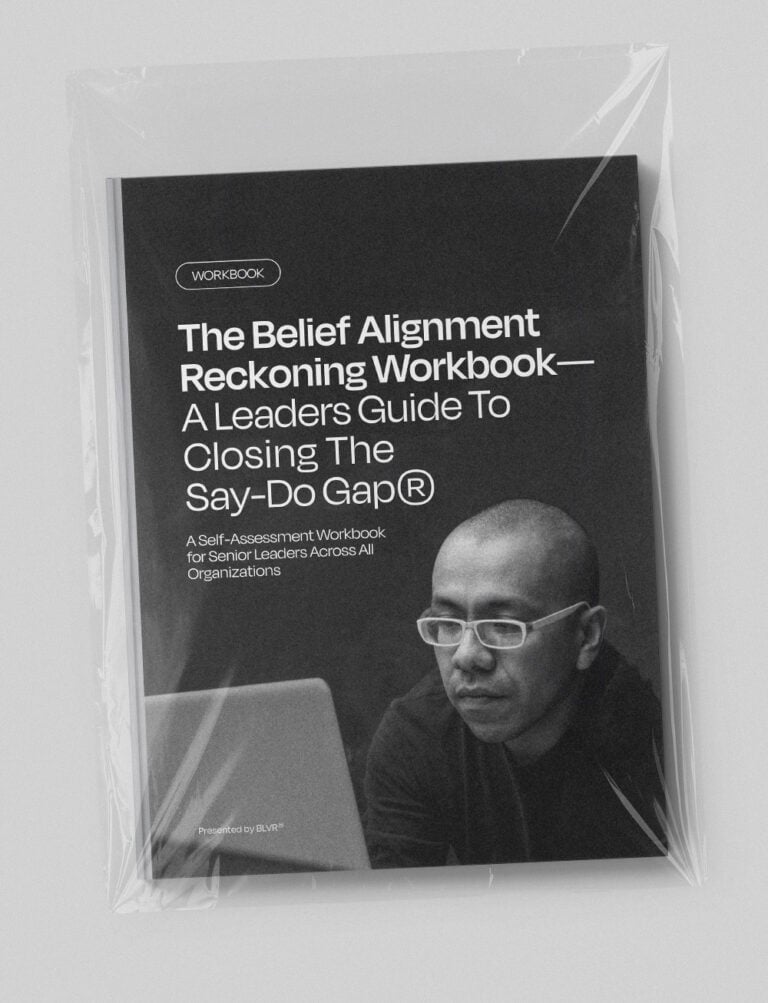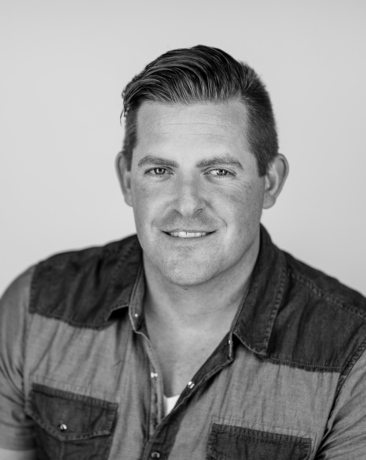
Business Branding / BY Scott Hancock
The Say-Do Gap® Is Costing You Trust—Here’s How to Close It
Published On 02.06.2025
Article
Talk Is Cheap, Action Isn’t
Here’s the reality your brand can’t ignore: Trust doesn’t live in what you say—it lives in what you deliver.
Your customers, employees, and stakeholders are not just listening to your promises but watching your actions. Every time what you say and what you do don’t align, trust takes the hit.
This disconnect is the Say-Do Gap®—the space where lofty marketing claims, cultural buzzwords, and big brand promises fail to be backed up by meaningful action. And in today’s trust-driven market, this gap is the silent killer of credibility, loyalty, and growth.
What Is the Say-Do Gap®?
The Say-Do Gap® is the difference between your brand’s promises and the reality you deliver. It happens in big ways, like claiming to be environmentally friendly while shipping everything in plastic. And in small, everyday moments—like offering ‘concierge-level service’ but making customers wait on hold for 45 minutes.
But the impact is the same: broken trust.
- 67% of consumers say they won’t return to a brand they don’t trust.
- Employees disengage when leadership doesn’t live out the values it preaches.
- Competitors capitalize on your failures, winning over your disillusioned customers.
In a market where trust is your most valuable currency, the Say-Do Gap® is costing you more than you think.
How the Say-Do Gap® Shows Up in Your Brand
It’s easy to overlook the gap when you’re in the trenches of running a business. But chances are, it’s already showing up.
Here’s what it might look like:
- Overpromising on Innovation You claim to be cutting-edge, but your offerings feel stale or behind the curve.
- Culture Misalignment You talk about prioritizing employees and work-life balance, but internally, the culture is toxic or demanding.
- Inconsistent Customer Experience Your marketing boasts seamless service, but your customers experience delays, confusion, or unmet expectations.
If any of this sounds familiar, the Say-Do Gap® is at work—and it’s time to close it.
The Cost of Misalignment
The Say-Do Gap® isn’t just a branding issue—it’s a business issue. Here’s what it’s costing you:
- Customer Churn: Acquiring a new customer costs five times more than retaining one, and broken promises drive customers straight to your competitors.
- Employee Turnover: Employees don’t just want a paycheck—they want purpose. Disengagement and attrition follow when leadership fails to live the brand’s values.
- Eroded Loyalty: Loyal customers are worth 10x more than their first purchase. But loyalty requires trust, and trust requires alignment between your words and your actions.
Case Study: Basecamp’s Alignment with Simplicity
Basecamp, a small project management software company, has mastered closing the Say-Do Gap® by staying fiercely aligned with its belief in simplicity and focus.
Here’s how they do it:
- Clear Product Design: Instead of overwhelming users with unnecessary features, Basecamp stays true to its core belief that “less is more.”
- Cultural Alignment: Internally, they operate from limiting meetings to creating calm, focused work environments.
- Walking the Talk: Basecamp actively turns down opportunities for expansion that don’t align with its core belief, ensuring it remains laser-focused on delivering what it promises.
Basecamp built trust with customers and employees by rejecting unnecessary complexity and doubling down on their belief. They’ve proven that alignment isn’t just a competitive advantage—it’s a trust-building machine.
How to Close the Say-Do Gap®
It’s not about perfection—it’s about consistent progress. Here’s how your brand can start closing the Say-Do Gap® today:
1. Reconnect with Your Core Belief
Your belief is the heart of your brand, but over time, it can get lost in the grind of daily operations. The first step to alignment is getting clear on what your brand stands for.
Ask Yourself:
- What is our brand’s deeper purpose beyond profit?
- What are the values we refuse to compromise on?
- If we disappeared tomorrow, what would customers and employees truly miss?
Example:
Loom, a workplace video communication platform, reconnects with its belief in simplicity and accessibility by consistently prioritizing ease of use in its product design. Rather than building complex features for a select few, they create tools that make work communication more human and inclusive—proving that their belief drives every decision.
2. Conduct a Fear Audit
Fear is the biggest culprit behind misalignment. It convinces you to play it safe, delay big moves, or avoid discomfort. Conducting a Fear Audit helps uncover where hesitation drives decisions instead of conviction.
How to Conduct a Fear Audit:
- Identify Misalignment: Look for areas where your actions don’t match your promises.
- Spot Fear’s Influence: Are these gaps driven by a fear of failure, alienating customers, or taking risks?
- Imagine Bold Alternatives: What would you do differently if fear weren’t in the equation?
Example:
When design agency Ugmonk faced pressure to scale rapidly, they leaned into their belief in craftsmanship over mass production. Instead of succumbing to fear-driven decisions, they remained true to their roots, producing small-batch, high-quality products. Their bold decision resonated deeply with their niche audience, creating lasting trust and loyalty.
3. Take One Visible, Belief-Driven Action
Actions speak louder than words. To close the Say-Do Gap®, start with one bold, visible action demonstrating your commitment to your core belief.
How to Take Action:
- Identify a key area of misalignment that your customers and employees can see.
- Make a bold, belief-driven move that proves you’re serious about alignment.
- Share your progress transparently—customers don’t expect perfection but value honesty.
Example:
Drift, a B2B conversational marketing company, made headlines by eliminating forms from its website in favor of live, real-time conversations. This bold move aligned with their belief in making marketing more human. The result? Drift became a category leader while building unparalleled trust with its audience.
Why Closing the Say-Do Gap® Pays Off
When you align what you say with what you do, the benefits ripple through your entire business:
- Increased Customer Loyalty: Trustworthy brands inspire long-term relationships and advocacy.
- Engaged Employees: Teams are energized when they see leadership walking the talk.
- Stronger Market Differentiation: In a crowded marketplace, alignment makes your brand stand out as authentic and reliable.
Ask Yourself: What Would Closing the Gap Look Like for Your Brand?
- Where is your Say-Do Gap® most visible?
- What’s one bold, belief-driven action you can take this month to realign?
- How will you communicate your progress to your customers and employees?
Trust isn’t built on promises—it’s built on proof. Start proving your belief today.
IS YOUR BRAND BUILT ON CONVICTION OR CONVENIENCE?
Most brands talk about purpose.
Few are willing to pay the price for it.
This 45-minute assessment will reveal the hidden contradictions costing you customer trust, team alignment, and market authenticity. Discover where your beliefs and actions diverge—and get the practical framework to close the gap that’s holding your brand back.

About the Author

Scott Hancock
Partner / CEO
Scott Hancock is a thought leader in belief-driven branding and an expert in closing the Say-Do Gap®—the critical divide between what brands say and what they actually do. As CEO of BLVR®, Scott has pioneered a belief-led approach that helps organizations transform their core conviction into bold actions that inspire trust, loyalty, and market leadership.
With a reputation for pushing brands to go beyond surface-level promises, Scott’s work has been recognized by AdWeek, Forbes, and Fast Company for its fearless creativity and impactful results. His leadership has empowered BLVR® to become a trusted partner for purpose-driven brands seeking to align their actions with their core belief and create lasting change.
© BLVR
SD / CA




